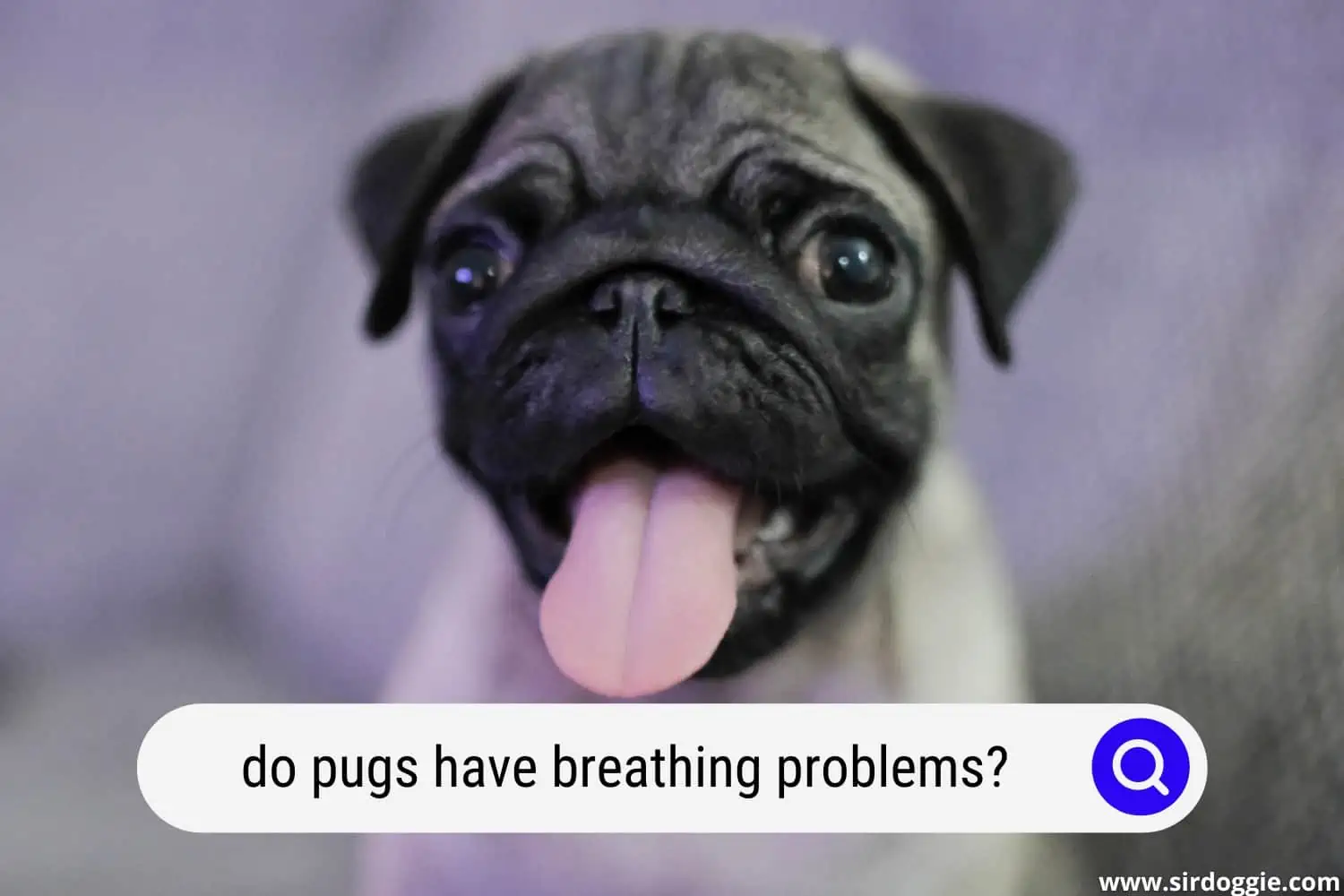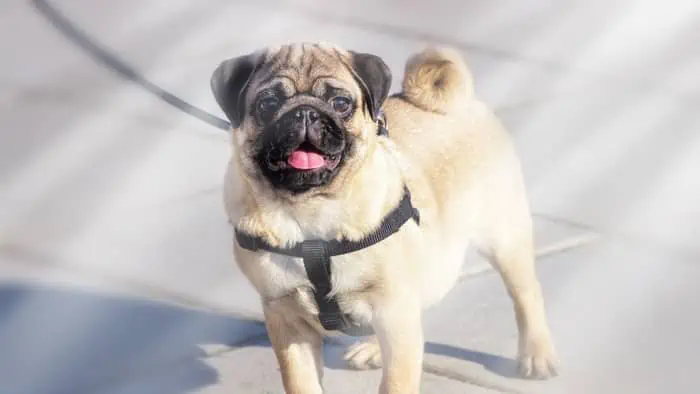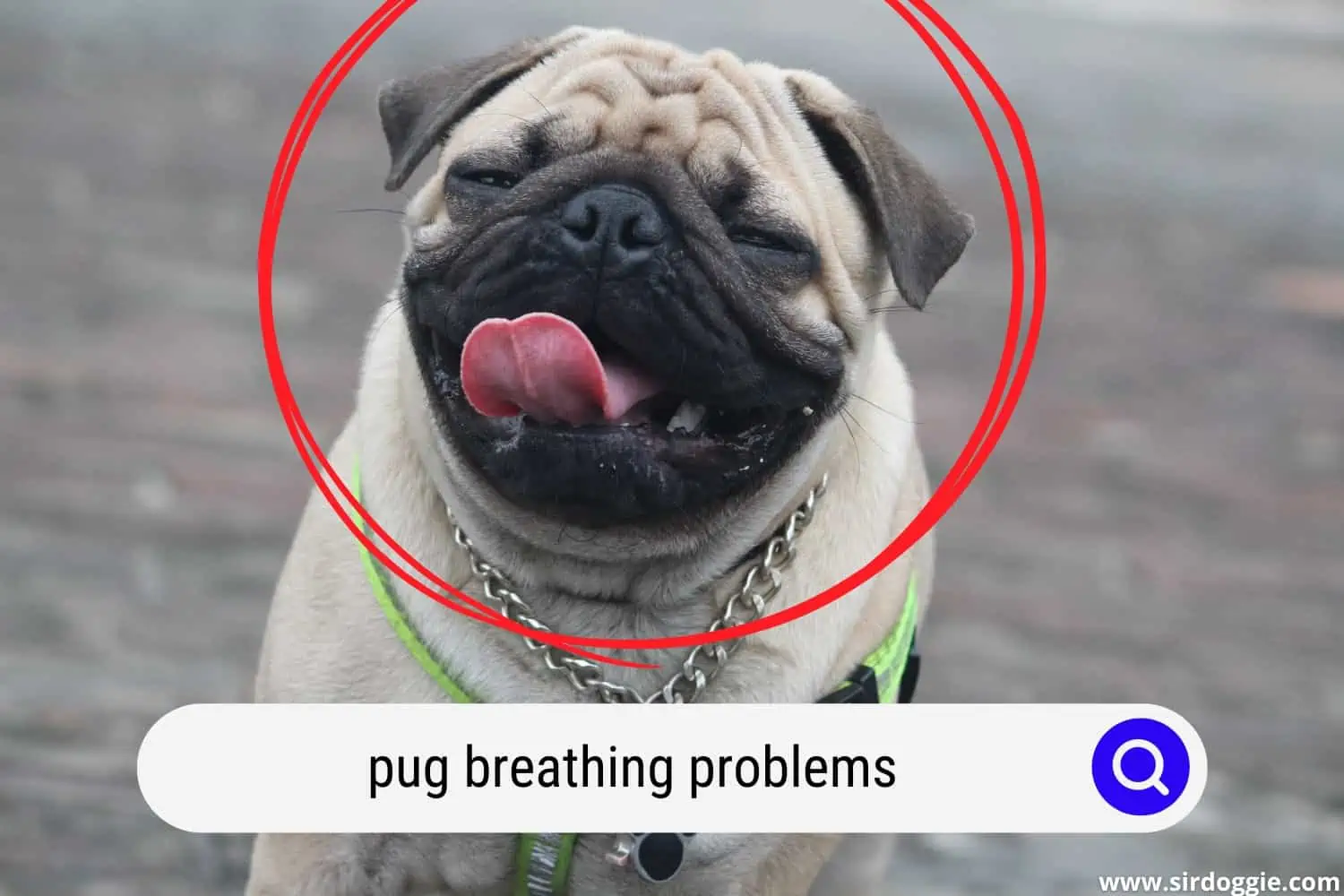Do Pugs Have Breathing Problems? Reasons and Contributing Factors
Short muzzle, button eyes, cute little nose, and those adorable wrinkles so hard to resist. Are you thinking of adopting a Pug? If yes, you have probably done your research and learned a little bit about the breed, including the potential health problems it can experience. Since Pugs are considered brachycephalic, you probably wonder “Do Pugs Have Breathing Problems?” And again, your suspicions can be confirmed through breed research: because of the pancake-like face shape, Pugs are one of the most high-maintenance dogs when it comes to their health.
So yes, they do develop breathing issues. Some of them are related to their face shape, some to the outside factors that just add to the Pug breathing misery. Selective Pug members’ breathing issues have gotten to the point that an invasive procedure has to be performed for a furry pal to live a better, healthier life. By “invasive,” a surgical pathways correction is implied.

Related Reading: Pug CT Scan
Pug Nose Surgery: Can Pugs Breathe Better After It?
In some severe cases of Pug’s brachycephalic condition nose surgery will be required to help the pooch breathe better. Pugs develop obstructive inhaling issues because of the very long soft palate: it blocks the normal airflow and causes Pugs to almost suffocate. Another problem that interferes with Pug’s normal breathing is the fact that they have very narrow nostrils.
Therefore it’s the double-trouble effect: the abnormally long and thick soft palate in combination with the thin nasal passages create a major airflow circulation issue. It will worsen if it’s hot out or a Pug friend is playing too actively outside. A vet surgeon will have to thoroughly assess the situation with each particular pet to see if one of those two issues needs correction or if both will have to be addressed. Usually, a Pug’s recovery period will be pretty swift and it will make a big difference in the animal’s overall health.
The average cost of a Pug-nose surgery is anywhere from $200 to $1000. However, a pet owner can bring the price way down if he/she enrolls in some pet insurance to cover at least some of the expenses. Sometimes a good policy will cover the whole vet bill! It all depends on the coverage and a company’s specific guidelines. But is the Pug’s skull structure the only factor to blame for an abnormal inhalation?
Why Do Pugs Have Trouble Breathing? Contributing Outside Factors
There are other factors to consider when dealing with a Pug’s wheezing issues. Let’s take a look at the most common ones.
- Hot weather: as briefly mentioned above, Pugs can’t tolerate very hot weather too well. They start panting heavily, wheeze, and look for a cool, shaded spot to hide from the sun’s unbearable rays. The best way to help your suffering fluffy friend is to provide it with plenty of water, shade, and some AC. It will start breathing normally in no time.

Related Reading: Pugs with Longer Snouts
- Exercising Too Actively: Pugs are not very physically active creatures. They won’t require vigorous daily walks, just a few potty breaks throughout the day. A pet owner can teach them how to play fetch or a tag-of-war game. However, he/she has to make sure the playtime doesn’t exceed 30 minutes. Also, it is better to avoid any physical activities in the yard during summer’s midday hours. It is simply too much for a flat-faced fella to bear.
- Bacteria in the Skin’s Folds: Pugs are known for their adorable, irresistible face wrinkles that make them look so cute. The only downside of having face folds is that it harbors bacteria if not cleaned promptly. An owner has to make cleaning a pet’s face a routine, something that is done regularly to prevent the spread of bacteria onto the nose and further into the airways.
- Obesity: another crucial factor to consider when dealing with Pug’s breathing issues. Excessive fat makes breathing difficult, more so if it accumulates around the throat area (the double-chin effect). Fat creates extra pressure around the air pathways obstructing normal oxygen flow. Pugs are prone to weight gain, therefore if their diet is not regulated and indulging in a lot of table foods takes place, they will most likely gain extra pounds. It is best to consult a veterinary specialist about a specific dog’s diet since no two canines are the same.
- Allergies: yep, just like the two-legged, canines are developing the same types of allergies that humans do. The most common are food and pollen allergies. It is recommended by all veterinarians to feed dogs dry foods that were specifically formulated for them. They are very well-balanced and have all the necessary nutrients a dog’s growing body might need. Occasional fruit and veggie snacks are extremely beneficial for any pooch since they contain a lot of vitamins, fiber, and iron. To avoid any allergic reactions, introducing healthy treats should be done in small, bite-size portions. If no adverse response follows, portions might be increased. The four-legged should stay away from processed people’s foods though.
- Chronic Bronchitis: Some pugs develop the condition if they are prone to allergies (parasites, dust, polled, etc.) and live in an environment with allergy-causing factors. Another reason can be an infection caused by bacteria being transferred from the face wrinkles to the nose and further into the lungs. It is almost impossible to get rid of chronic bronchitis. Hence, only prescribed medication and elimination of triggers can aid in managing a stable, wheeze-free life for a suffering four-legged furry creature. Thus we slowly came up to the steps an owner can take to help his/her Pug breathe better.
How To Help Pugs Breathe Better?
- Keep Pug’s Weight at Check: stick to dog food only and occasional veggie/fruit snacks.
- Get Rid of Allergy-Triggering Elements: the aforementioned pollen, dust mites, as well as household supplies and skin parasites.
- Keep your Pug Away from Extreme Weather Conditions: scorching heat or cold can wreak havoc on a Pug’s sensitive respiratory system.
- Don’t overexercise your Pug: exhaustion can lead to heavy panting, and cause dizziness.
- Nose Surgery: in especially difficult cases where the nostrils are too narrow or the soft palate is too large.

Curl-Up
Even though Pugs are notorious for having breathing problems because of their peculiar skull composition, it is still possible for them to live a normal life. Whether it be nose surgery, weight management, or keeping them in comfortable temperatures, all of these are aimed at helping Pugs breathe better. No two dogs are the same, therefore an owner has to decide what the best method would be for his/her particular fluffy companion.
Related Reading: Can Dogs Breathe Under Blankets?

Family Dog Expert Author
Hi there! I’m Stuart, a devoted dog lover and family dog expert with over a decade of experience working with our furry companions. My passion for dogs drives me to share my knowledge and expertise, helping families build strong, loving bonds with their four-legged friends. When I’m not writing for SirDoggie, you’ll find me hiking, playing with my beautiful dog, or studying music.